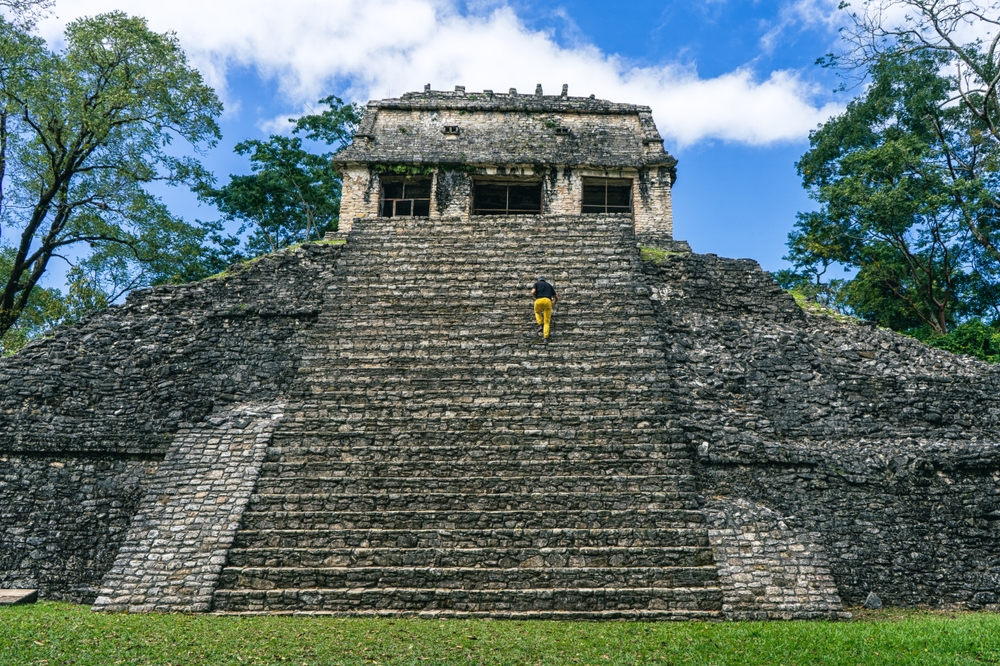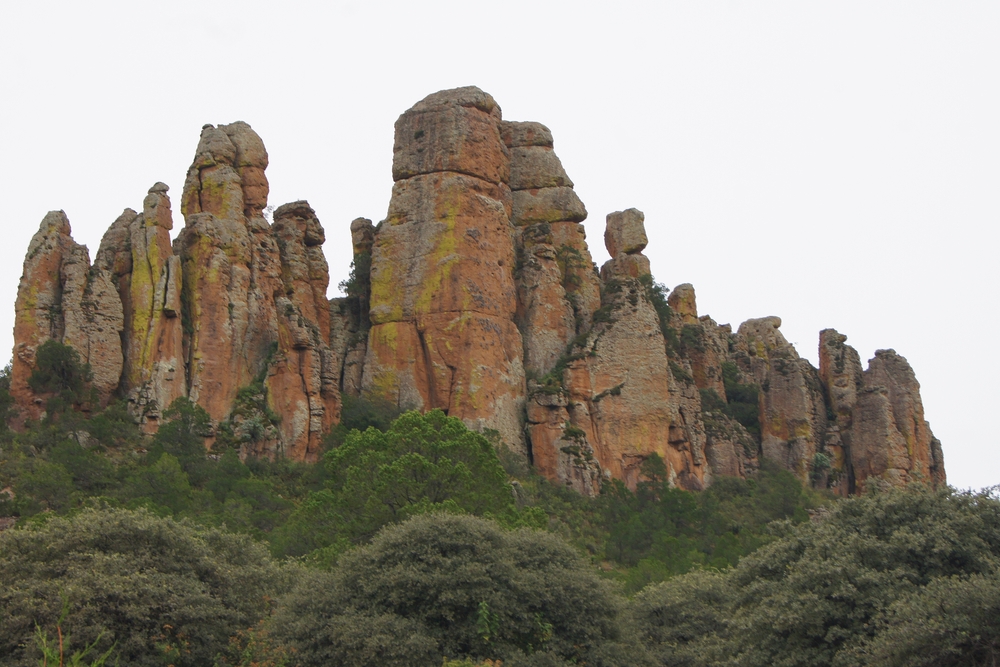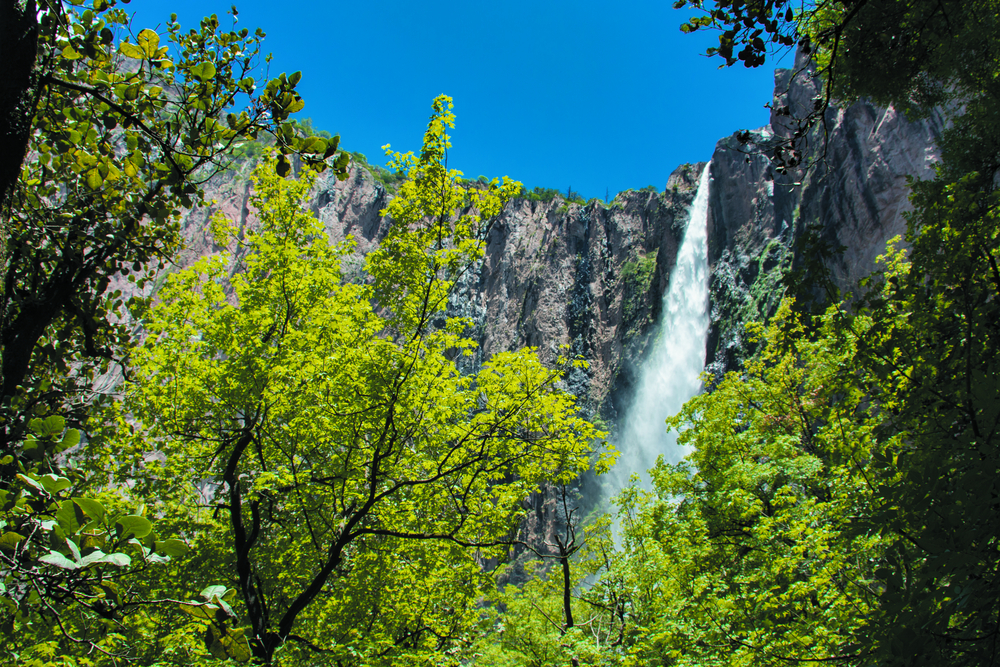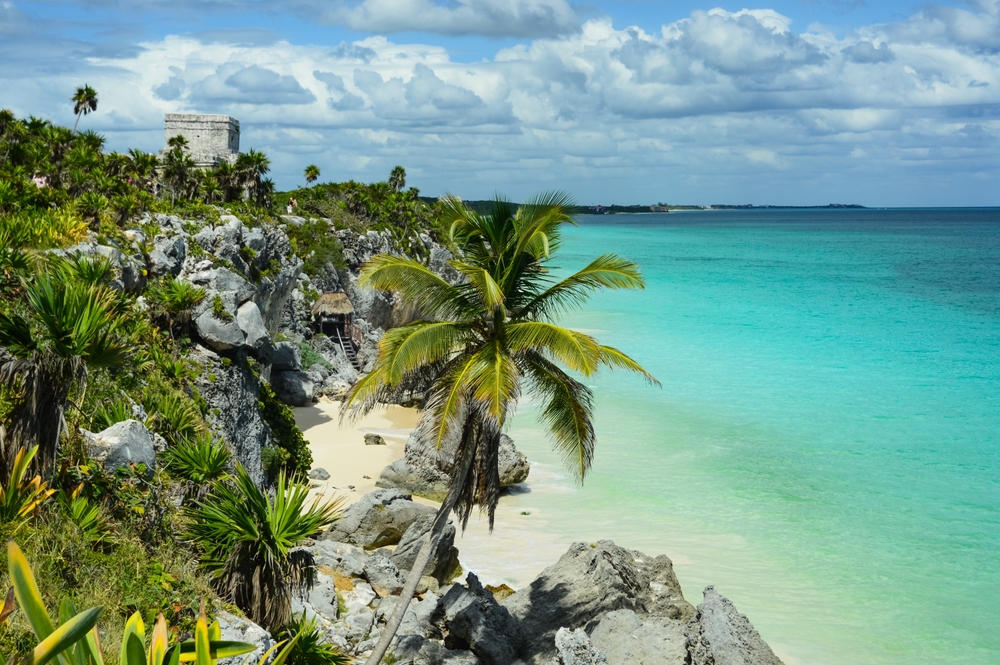Tulum Overview
Tulum National Park, known as Parque Nacional Tulum in Spanish, is located on the eastern coast of Mexico’s Yucatán Peninsula in the state of Quintana Roo.
Covering approximately 26 square miles (67 square kilometers), the park is situated along the Caribbean coastline and is renowned for its stunning blend of natural beauty and historical significance.
Overlooking the turquoise waters of the Caribbean Sea, the park is home to the famous Tulum ruins, an ancient Mayan archaeological site that draws visitors from around the world. The combination of coastal cliffs, white-sand beaches, and lush tropical vegetation makes this park a captivating destination for nature lovers and history enthusiasts alike.
The landscape of Tulum National Park is defined by its coastal ecosystem, featuring limestone cliffs that rise dramatically above the Caribbean, offering breathtaking views of the sea. The park’s terrain consists of a mix of mangroves, tropical dry forests, and sandy beaches, all of which support a diverse range of flora and fauna.
The presence of underground rivers and cenotes, or natural sinkholes, adds to the unique geological character of the region, as these freshwater sources provide an essential habitat for both wildlife and local plant species. The park is part of the larger Mesoamerican Barrier Reef System, the second-largest coral reef system in the world, making it an important area for marine conservation.
Tulum National Park is home to a variety of wildlife species, both on land and in the surrounding waters. Among the most notable terrestrial mammals are coatis, white-nosed raccoons, spider monkeys, and jaguarundis. The park is also a habitat for a diverse range of bird species, including the Yucatán jay, tropical kingbird, and the striking turquoise-browed motmot.
The coastal waters are teeming with marine life, with sea turtles frequently seen nesting along the beaches. The park plays a crucial role in the conservation of green and loggerhead turtles, which come ashore to lay their eggs. Additionally, dolphins and rays can be spotted in the clear waters just off the coast, adding to the park’s vibrant biodiversity.
One of the most iconic features of Tulum National Park is the ancient Mayan ruins that sit atop the cliffs, overlooking the sea. The ruins of Tulum, once a thriving port city of the Mayan civilization, include well-preserved structures such as El Castillo, the Temple of the Frescoes, and the Temple of the Descending God.
These ruins offer a glimpse into the history and culture of the Mayan people while providing a striking contrast to the surrounding natural landscape. The combination of history and nature makes this park a unique and popular destination for visitors.
Visitors to Tulum National Park can engage in a variety of activities, from exploring the archaeological ruins to relaxing on the pristine beaches. Snorkeling and diving are popular along the reef, where vibrant coral formations and colorful fish await.
Swimming in the cenotes, with their crystal-clear waters and fascinating cave systems, provides a refreshing experience while also offering insight into the region’s geological history. Nature trails within the park allow visitors to explore the diverse ecosystems, while guided tours provide deeper knowledge about the park’s cultural and natural heritage.
Conservation efforts within Tulum National Park focus on preserving both its ecological and archaeological treasures. Challenges include the impact of tourism, coastal development, and climate change, all of which pose threats to the delicate balance of the park’s environment.
However, ongoing efforts by conservation organizations and government agencies have led to protective measures such as restricted access to sensitive areas and sustainable tourism initiatives. The park’s designation as a protected area helps ensure that its rich biodiversity and cultural heritage remain intact for future generations.
Park Map
Tulum National Park Highlights
Share your clicks with us
Related National Parks More Mexico

Palenque National Park

Sacromonte National Park

San Lorenzo Marine Archipelago National Park

Tula National Park

Sistema Arrecifal Veracruzano National Marine Park

Sierra de Órganos National Park

Basaseachic Falls National Park

Cañón del Sumidero National Park

Cañón del Río Blanco National Park











































































